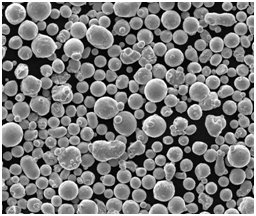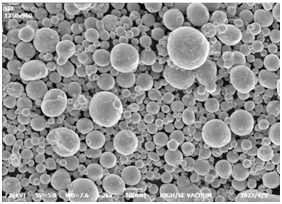نظرة عامة على Multi Material Jetting (MMJ)
مرحباً بك في عالم النفث متعدد المواد (MMJ)! إذا كنت هنا، فمن المحتمل أنك تتساءل عن سبب تميز MMJ كتقنية بارزة في مجال الطباعة ثلاثية الأبعاد والتصنيع بالإضافة. تخيل هذا: لديك طابعة، ولكن بدلاً من الحبر، فإنها تقذف قطرات صغيرة من مواد مختلفة لبناء هياكل معقدة طبقة تلو الأخرى. رائع، أليس كذلك؟ يوفر MMJ تنوعًا ودقة لا مثيل لهما، مما يجعله يغير قواعد اللعبة في الصناعات التي تتراوح من الفضاء إلى الرعاية الصحية.
إذن، ما هو Multi Material Jetting بالضبط؟ في الأساس، إنه نوع من الطباعة ثلاثية الأبعاد يتضمن الترسيب المتزامن لمواد متعددة. تتيح هذه التقنية إنشاء أجزاء معقدة ذات خصائص متنوعة، والجمع بين المعادن والبوليمرات والسيراميك في عملية بناء واحدة. إنه مثل القدرة على الرسم باستخدام لوحة من المواد، يضيف كل منها لمسته الفريدة إلى التحفة النهائية.
مقدمة إلى Multi Material Jetting (MMJ)
قبل أن نتعمق في التفاصيل التقنية، دعنا نضع الأساس. Multi Material Jetting ليست مجرد تقنية مستقبلية؛ إنها بالفعل تحدث ثورة في كيفية تصميمنا وتصنيعنا للمنتجات. من خلال تمكين الجمع بين مواد متعددة في عملية واحدة، يسمح MMJ بإنشاء أجزاء ذات أشكال هندسية معقدة وخصائص مصممة خصيصًا. هذا يعني أنه يمكنك الحصول على جزء مرن وصلب في نفس الوقت، أو جزء يجمع بين المواد الموصلة والعازلة، وكل ذلك يتم إنشاؤه في عملية واحدة سلسة.

تكوين Multi Material Jetting (MMJ)
عندما نتحدث عن MMJ، فإن تكوين المواد المستخدمة أمر بالغ الأهمية. إليك تفصيل للمواد الأساسية:
| نوع المادة | التركيب | الخصائص |
|---|---|---|
| المعادن | الفولاذ المقاوم للصدأ، التيتانيوم، سبائك الألومنيوم | قوة عالية، توصيل، ثبات حراري |
| البوليمرات | ABS، PLA، البوليمرات الضوئية | المرونة، التوافق الحيوي، سهولة المعالجة |
| السيراميك | الألومينا، الزركونيا | الصلابة، المقاومة الحرارية، العزل الكهربائي |
| المركبات | مزيج المعادن والبوليمرات، مزيج السيراميك والبوليمرات | خصائص ميكانيكية محسنة، توصيل ومرونة مصممة خصيصًا |
كل مادة تجلب شيئًا فريدًا إلى الطاولة. توفر المعادن المتانة والمتانة، وتوفر البوليمرات المرونة وسهولة الاستخدام، بينما تعتبر السيراميك مثالية للتطبيقات ذات درجة الحرارة العالية.
خصائص النفث متعدد المواد (MMJ)
يساعدنا فهم خصائص MMJ على تقدير تنوعه وإمكاناته. فيما يلي بعض الميزات الرئيسية:
- الدقة والدقة: يمكن لـ MMJ تحقيق مطبوعات عالية الدقة بسمك طبقات يصل إلى 16 ميكرون.
- تنوع المواد: تفتح القدرة على الجمع بين مواد مختلفة في عملية واحدة إمكانيات لا حصر لها لإنشاء أجزاء متعددة الوظائف.
- تشطيب السطح: عادةً ما تتمتع أجزاء MMJ بلمسة نهائية ناعمة للسطح، مما يقلل الحاجة إلى المعالجة اللاحقة.
- الأشكال الهندسية المعقدة: يمكن تحقيق التصميمات المعقدة التي ستكون مستحيلة باستخدام طرق التصنيع التقليدية بسهولة.
تطبيقات Multi Material Jetting (MMJ)
تغطي تطبيقات MMJ مجموعة واسعة من الصناعات. دعنا نلقي نظرة على بعض أبرزها:
| الصناعة | طلب | أمثلة |
|---|---|---|
| الرعاية الصحية | الأطراف الصناعية، زراعة الأسنان، الأجهزة الطبية | الأطراف الصناعية المخصصة، الغرسات المتوافقة حيويًا |
| الفضاء | المكونات خفيفة الوزن، التجميعات المعقدة | أجزاء محركات الطائرات، مكونات هيكلية خفيفة الوزن |
| السيارات | النماذج الأولية، الأجزاء الوظيفية | لوحات القيادة المخصصة، المقاعد المريحة |
| السلع الاستهلاكية | المنتجات المخصصة، النماذج عالية التفاصيل | المجوهرات المخصصة، المنمنمات المعقدة |
| الإلكترونيات | لوحات الدوائر المطبوعة، الأجهزة القابلة للارتداء | لوحات الدوائر المطبوعة المرنة، الساعات الذكية |
تستفيد كل صناعة من القدرات الفريدة لـ MMJ، سواء كان الأمر يتعلق بإنشاء مكونات فضاء خفيفة الوزن ولكنها قوية أو سلع استهلاكية مفصلة وشخصية للغاية.






المواصفات والمعايير في Multi Material Jetting (MMJ)
عندما يتعلق الأمر بـ MMJ، فإن الالتزام بالمواصفات والمعايير أمر بالغ الأهمية لضمان الجودة والاتساق. إليك نظرة على بعض المواصفات والمعايير الرئيسية:
| المعلمة | المواصفات | التفاصيل |
|---|---|---|
| سُمك الطبقة | 16-32 ميكرون | يحدد دقة المطبوعة والتشطيب السطحي للجزء |
| حجم البناء | ما يصل إلى 1000 × 800 × 500 مم | الحد الأقصى لحجم الكائن القابل للطباعة |
| تفاوت المواد | ±0.1% | الدقة في ترسيب المواد |
| سرعة الطباعة | 10-30 ملم / ساعة | يختلف بناءً على المادة وتعقيد الجزء |
| المعايير | ISO/ASTM 52900، ASTM F2792 | إرشادات قياسية لعمليات التصنيع بالإضافة |
تفاصيل الموردين والتسعير لـ النفث متعدد المواد (MMJ)
يعد العثور على المورد المناسب وفهم التكاليف المتضمنة أمرًا ضروريًا لأي شخص يتطلع إلى استخدام تقنية MMJ. إليك جدول به بعض الموردين البارزين وتفاصيل التسعير:
| المورد | المواد المتاحة | التسعير | معلومات الاتصال |
|---|---|---|---|
| Stratasys | البوليمرات والمعادن والمركبات | ابتداءً من 50 دولارًا/كجم | www.stratasys.com |
| الأنظمة ثلاثية الأبعاد | البوليمرات والمعادن | ابتداءً من 70 دولارًا / كجم | www.3dsystems.com |
| إتش بي | البوليمرات | ابتداءً من 60 دولارًا / كجم | www.hp.com |
| تجسيد | البوليمرات والسيراميك والمعادن | تسعير مخصص | www.materialise.com |
| EOS | المعادن والبوليمرات | ابتداءً من 100 دولار / كجم | www.eos.info |
يمكن أن تختلف الأسعار بناءً على نوع المادة والكمية والمورد. من الجيد دائمًا طلب عروض أسعار ومقارنة الخيارات قبل اتخاذ القرار.
مقارنة إيجابيات وسلبيات Multi Material Jetting (MMJ)
لكل تقنية نقاط قوة ونقاط ضعف. دعنا نقارن إيجابيات وسلبيات MMJ:
| أسبكت | مزايا | سلبيات |
|---|---|---|
| تعدد استخدامات المواد | يمكن الطباعة بمواد متعددة في وقت واحد | تقتصر على توافق المواد |
| الدقة | دقة عالية ودقة | سرعة طب |
| التعقيد | قادرة على إنتاج أشكال هندسية معقدة وأجزاء متعددة الوظائف | تتطلب برامج وخبرات متقدمة |
| تشطيب السطح | التشطيب السلس يقلل من الحاجة إلى المعالجة اللاحقة | قد لا تزال تتطلب بعض التشطيبات اعتمادًا على التطبيق |
| التكلفة | فعالة من حيث التكلفة لإنتاج أجزاء معقدة منخفضة الحجم | يمكن أن تكون تكاليف الإعداد والمواد الأولية مرتفعة |
أوصاف تفصيلية لنماذج مسحوق المعادن
الآن، دعنا نتعمق في بعض نماذج مسحوق المعادن المحددة المستخدمة في MMJ، مع تسليط الضوء على خصائصها الفريدة وتطبيقاتها:
- فولاذ مقاوم للصدأ 316L: تشتهر بمقاومتها للتآكل وقوتها، 316L مثالية لزراعة الأعضاء الطبية ومعدات تجهيز الأغذية.
- التيتانيوم Ti6Al4V: هذه السبيكة خفيفة الوزن وقوية، وتستخدم بشكل شائع في تطبيقات الفضاء والطب الحيوي.
- انكونيل 718: سبيكة نيكل-كروم تتمتع بخصائص ممتازة في درجات الحرارة المرتفعة، وهي مثالية لشفرات التوربينات ومحركات الصواريخ.
- الألومنيوم AlSi10Mg: تجمع هذه السبيكة بين الوزن الخفيف والخصائص الميكانيكية الجيدة، مما يجعلها مناسبة لأجزاء السيارات والفضاء.
- كوبالت كروم (CoCr): تشتهر بمقاومتها للتآكل والتوافق الحيوي، يستخدم CoCr في زراعة الأسنان والعظام.
- فولاذ ماراجينج ستيل (MS1): يستخدم هذا الفولاذ عالي القوة في الأدوات والمكونات عالية الإجهاد.
- سبيكة النيكل 625: مقاومة للتآكل ودرجات الحرارة المرتفعة، تستخدم هذه السبيكة في المعالجة الكيميائية والتطبيقات البحرية.
- النحاس (النحاس): مع توصيلية حرارية وكهربائية ممتازة، يستخدم النحاس في الإلكترونيات والمبادلات الحرارية.
- فولاذ الأدوات H13: تشتهر بصلابتها ومقاومتها للإجهاد الحراري، يستخدم H13 في الصب بالقوالب والقولبة.
- الذهب (Au): بالإضافة إلى جاذبيتها الجمالية، يستخدم الذهب في الإلكترونيات والأجهزة الطبية لتوصيله وتوافقه الحيوي.
لكل نموذج من مسحوق المعادن استخداماته ومزاياه الخاصة، مما يجعل MMJ تقنية متعددة الاستخدامات لمختلف الصناعات.

التعليمات
| سؤال | الإجابة |
|---|---|
| ما هو التشكيل النفاث متعدد المواد (MMJ)؟ | MMJ هي تقنية طباعة ثلاثية الأبعاد تودع مواد متعددة في وقت واحد لإنشاء أجزاء معقدة. |
| ما هي المواد التي يمكن استخدامها في MMJ؟ | يمكن استخدام المعادن والبوليمرات والسيراميك والمركبات في MMJ. |
| ما هي فوائد MMJ؟ | دقة عالية، تنوع المواد، تشطيب سطح أملس، والقدرة على إنشاء أشكال هندسية معقدة. |
| ما هي قيود MMJ؟ | ارتفاع تكاليف الإعداد الأولية، وبطء سرعات الطباعة، ومشكلات توافق المواد. |
| ما هي الصناعات التي تستفيد من MMJ؟ | الرعاية الصحية، والفضاء، والسيارات، والسلع الاستهلاكية، والإلكترونيات. |
| كيف تقارن MMJ بطرق الطباعة ثلاثية الأبعاد الأخرى؟ | يوفر MMJ تنوعًا ودقة أكبر للمواد، ولكنه قد يكون أكثر تعقيدًا وتكلفة. |
| ما هو حجم البناء النموذجي لـ MMJ؟ | ما يصل إلى 1000 × 800 × 500 مم، اعتمادًا على الجهاز. |
| هل هناك إرشادات قياسية لـ MMJ؟ | نعم، توفر ISO/ASTM 52900 و ASTM F2792 إرشادات لعمليات التصنيع الإضافي. |
| كيف أختار موردًا لمواد MMJ؟ | قارن توفر المواد والتسعير وسمعة المورد. اطلب عروض أسعار للحصول على أفضل صفقة. |
| ما هي التطبيقات النموذجية لـ MMJ؟ | الأطراف الصناعية المخصصة، ومكونات الفضاء خفيفة الوزن، وأجزاء السيارات الوظيفية، والمزيد. |

